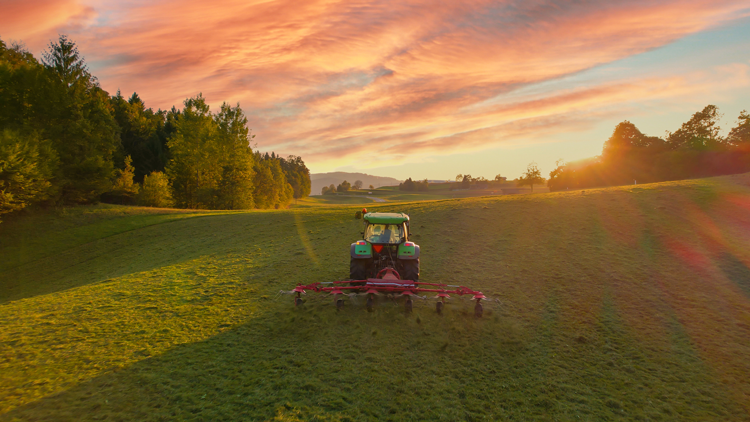Consider the tedder |
| By Adam Verner |
|
|
|
Adam Verner is a managing partner in Elite Ag LLC, Leesburg, Ga. He also is active in the family farm in Rutledge.  Time . . . it’s the one thing we never seem to have enough of. Time on the farm can bring about a totally different outlook. That outlook in the hay business is usually based on the weather forecast. How much time do we have between rainstorms, or what time is the sun supposed to break out from behind the clouds? The stress caused by scheduling your hay operation is largely based on time. So, anything we can do to shorten the amount of time when cut hay is on the ground is always beneficial. Fighting these issues of rain and moisture is nothing new for farmers in the eastern U.S., but Western hay growers also fight the same battle. As many of us start to farm more and more acres, this means we have to get more acres to dry in the same amount of time. To speed the drying in grass hay, farmers often use a tedder, or fluffer, as it’s called in the South. These fluffers do just that — they “fluff” the hay out to help speed up dry down. They start by scattering out the mowed windrows into an even, fluffy layer. This will enable more air flow through the crop and allow sunlight to evenly dry down all of the crop, not just the top layer of the narrower windrow. The fluffier and wider we can make the crop, the more air will flow through it and over it. The tedder is not a new piece of equipment; in fact, The New York Times reported on a machine used to scatter out hay in 1868. These days, tedders have scaled up. Models are available from 6 feet to 60 feet of working width, with the larger units becoming more popular in recent years. You don’t typically see many tedders used in alfalfa production, as they are fairly aggressive and can knock off leaves unless the crop is still high in moisture. There are some manufacturers that now have models where you can adjust the angle and aggressiveness settings, so you are basically stirring the hay and not throwing it everywhere. This can be helpful in alfalfa if you get a stray rain shower during the season. Spreading out the windrows will drastically reduce the amount of time before a baler can get in the field. As working widths have grown, the amount of time spent in the field has declined, allowing for multiple trips to be made if needed. With better time management of the dry-down period, you can justify the extra trip across the field with the ability to cover more acres in the same amount of time. Whether you use a four-basket or a 14-basket tedder, the end goal is to put up the highest quality forage possible in the shortest amount of time. It’s a tool you might want to consider in 2025. This article appeared in the February 2025 issue of Hay & Forage Grower on page 23. Not a subscriber? Click to get the print magazine. |
